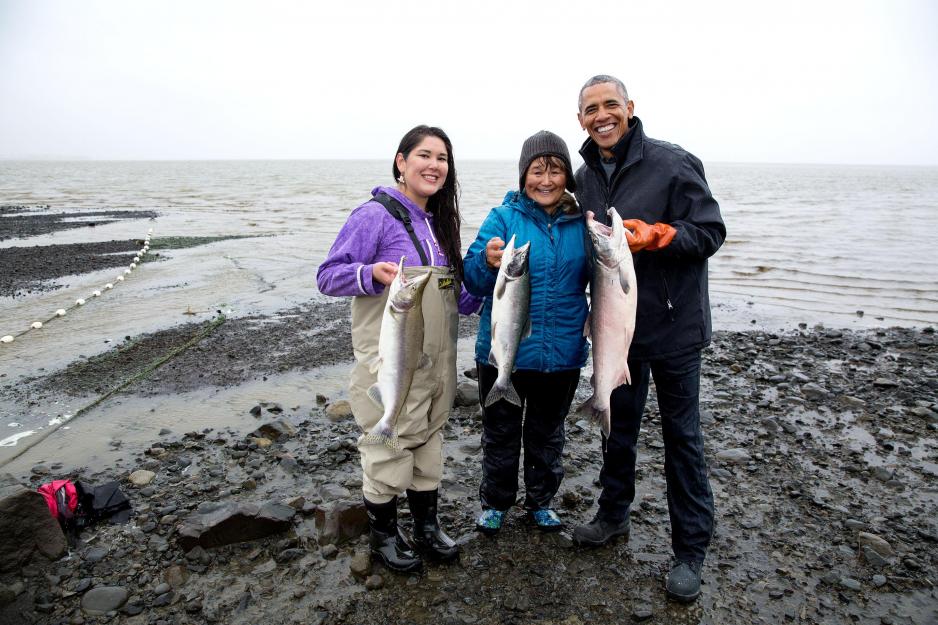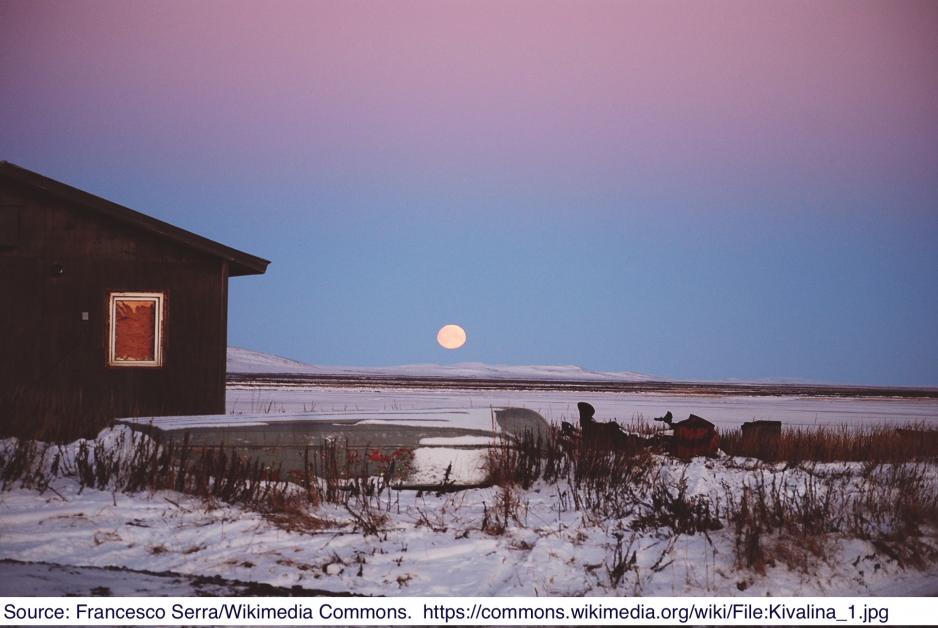The Current Democratic Candidates Have Yet to Address the Impact of Climate Change, Expert Say

Barack Obama became the first president to travel above the Arctic Circle. This photo is from his visit to Alaska in 2015. Photo credit: The White House.
Then-President Obama’s historic trip to Alaska in 2015 was intended to transform the Arctic into a climate change priority for the U.S. But the current democratic candidates have yet to address the impact of climate change on the region.
September has been an exciting month for US democratic presidential hopefuls struggling to distinguish themselves and their policies from other contenders. As they attempt to do so, the country is also experiencing a dramatic shift in the issues that matter most to voters. For the first time in American political history, climate change will be a top-tier issue in a presidential election.
Earlier this month, CNN hosted an unprecedented town hall on climate change at which democratic candidates spoke for a total of roughly seven hours on plans to address the growing threats. In the Democratic Debate this past weekend, candidates confronted each other on their respective policies to curb the human behaviors driving global warming.
Despite the newfound emphasis on climate issues, a critical crossroad has escaped significant attention. Specifically, the hot-button topics—including the out-of-control wildfires in California, powerful storms in the Gulf and along the East Coast, and rapidly rising sea levels in Florida—continue to ignore the disastrous climate events plaguing Alaska. In comparison to her Sister States, Alaska faces arguably some of the worst consequences of a warming planet.
The Alaskan Arctic is warming at twice the rate of the rest of the planet, according to researchers. Melting permafrost has become synonymous with unstable soil for Alaskans and threatens the structural integrity of buildings and roads. As a result, entire villages are at risk of crumbling to the ground or sinking into the ocean. Carbon gases released by melting permafrost directly enter the atmosphere, exacerbating warming.
The resulting record temperatures ignite dried vegetation, leaving the landscape increasingly vulnerable to sweeping wildfires. Alaskan wildfires grew so out of control in 2015 that nearby states, as well as the Canadian government, sent equipment and firefighters to aid in the effort. That year, 5.1 million acres burned, compared to the 8.8 million acres burned in California’s record-breaking 2018 wildfire season.
A Trip to Remember
As the U.S. climate change agenda takes shape, it is more important than ever to confront the impact of climate change on Alaska and the Arctic. Recognizing its significance, President Obama presciently sought to highlight the issue during a historic, but seemingly forgotten, trip to Alaska in 2015—a trip that American historian and author Dr. Jeremi Suri considers “extraordinary.” During this trip, four years ago this month, President Obama became the first sitting U.S. president to travel to the Alaskan Arctic. It was also one of the last major trips of his presidency, tying in duration with his attendance of the G-20 Summit in Turkey for his longest presidential trip of 2015.

American historian and author, Dr. Jeremy Suri.
During the trip, Obama sought to elevate Alaska’s importance to United States climate policy by showcasing Alaska’s delicate beauty, the richness of its cultures, and the need to preserve its enumerable treasures for future generations. “On my way here,” Obama recounted to Alaskans, “I flew over the island of Kivalina, which is already receding into the ocean.” He explained “waves sweep across the entire island at times, from one side clear across the other.”
The elders of the Kivalina tribe have already made the heart-wrenching decision to leave their ancestral homeland, which experts believe will be underwater by 2025. “If another country threatened to wipe out an American town, we’d do everything in our power to protect it. Well climate change poses the same threat right now” was his poignant call to action.
Extending the ‘Aloha Spirit’
Dr. Suri, who reveals President Obama’s early life influences in his book, The Impossible Presidency, draws on Obama’s upbringing in Hawaii as providing the underlying motivation for the Alaska trip. “It's so evident how personally connected he was, and personally invested in it he was,” Suri explains. "Both Alaska and Hawaii share this history of being late entries into the United States. And places often ignored, also. You know people think of Hawaii and Alaska as vacation destinations, not essential parts of the United States."

Obama highlighted the connection in a speech directed to Alaskans during his trip. “Help, if you need it, is a long way away. This far north, everybody has to look out for each other. And even with all those efforts, there's still isolation and there's poverty and it can be harsh. And that means that you depend on each other. It makes family and community and tradition all the more important. I grew up in Hawaii, which obviously the weather's a little different, but there's a similarity—what’s called the ‘Aloha spirit’ there—and I know you have that you all have the same spirit here; the notion that we're all in this together. And that's all the more profound in a place above the Arctic Circle.”
According to Suri, Obama hoped to achieve three outcomes from his trip to Alaska, and was successful. First, he wanted to bring attention to climate issues in the Arctic. “There are a lot of environmentalists, especially in places like Austin, Texas, and elsewhere, and California, who don't think of Alaska,” notes Suri. Second, Obama also sought to reinforce the urgency for protecting Arctic lands and cultures. Finally, he brought non-environmentalists into the conversation by emphasizing the need to attend to a shared vision for the future, instead of focusing on the politics. “So it was an effort, it seems quaint now, but it was an effort at bipartisanship, I think," Suri explains.
The Absent Conversation
Yet despite the attention Obama brought to Alaska with his historic trip, the issue has still largely escaped the political stage. Candidates have been quick to address climate change threats to the “Lower 48” states. But the candidates have completely failed even to acknowledge—much less address—the pressing needs of Alaska and the Arctic. The words “Alaska” and “Arctic” have been passing utterances, instead of the major talking points that they deserve to be.
Obama’s Hawaiian background vested him with a special sensitivity for the ease with which Americans can sometimes overlook issues in a remote state like Alaska, which to some Americans seems less important than her Sister States. Indeed, it is questionable whether any other president in similar circumstances would have undertaken the same trip.
But the mere fact that most Americans are from the “Lower 48” in no way lessens the importance of protecting Alaska. Nor should it be a limiting factor in our collective ability to grasp the need for attention and action. We seem to be asking ourselves more than ever “What would Obama do?” Yet, when it comes to Alaska, we have disserved our country by forgetting what Obama did do, and the changes he hoped to inspire in the future of climate change policy in Alaska.
